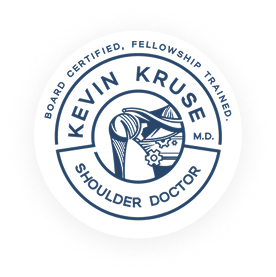Causes, Treatment & Symptoms
A Bony Bankart lesion is a fracture of the front rim of the shoulder socket (glenoid) usually caused by shoulder dislocation. Unlike soft tissue Bankart injuries, this involves a piece of bone. Recognizing it early and getting expert care from Dr. Kruse can prevent future instability and long-term damage.
What Is a Bony Bankart Lesion?
– Definition in simple terms: When your upper arm bone (humerus) pops out of the socket (glenoid), it can break a small piece off the socket rim. That fragment is a bony Bankart lesion.
– Soft vs. bony Bankart: Soft tissue Bankarts are tears of the labrum (cartilage), whereas bony Bankarts include a fractured bone fragment. The former is a cartilage injury, the latter is a combined bone-fracture–cartilage issue.
– Why it causes instability: The missing rim weakens the socket’s ability to keep the arm bone stable, increasing the chance of future dislocations.

Causes of a Bony Bankart Injury
Traumatic dislocations: Often result from sudden force—like a fall or accident—popping the shoulder forward and snapping off part of the socket rim.
Sports injuries: Contact sports (e.g., rugby, football) or overhead athletic activities (e.g., gymnastics, baseball) can lead to the injury.
Recurrent instability episodes: Multiple dislocations worsen the socket damage over time, enlarging the bone fragment.
Common Symptoms
- Shoulder weakness or instability: The shoulder might feel like it wants to give way.
- Shoulder “slipping out” sensation: Known as subluxation, it often triggers anxiety or guarding.
- Pain and limited motion: You may experience sharp pain, swelling, and reduced rotation or lifting ability.
Diagnosis and Imaging
A Bony Bankart lesion is diagnosed via imaging:
- X-rays may show the bone fragment if it’s big enough.
- CT scans help evaluate the fragment’s size, displacement, and associated bone loss.
- MRI reveals labral tears and soft tissue injuries (like Hill-Sachs lesions).
Accurate imaging is crucial for planning treatment and choosing the right repair technique.
Treatment Options
Non-surgical approaches
- Appropriate when the bone fragment is small and symptoms mild.
- Involves immobilization and a structured rehab: rest, ice, anti-inflammatories, and physical therapy focusing on strengthening the rotator cuff and shoulder stabilizers.
Surgical repair
- Arthroscopic (minimally invasive): Uses small incisions, cameras, and anchors to secure both bone and labrum back to the socket. Faster recovery, less scarring.
- Open repair: Used when large bone loss or complex anatomy demands direct access and grafting.
- Dr. Kruse’s surgical approach: Favors arthroscopic repair when viable, and opts for individualized strategy—including open techniques—for challenging cases.
Recovery and Rehabilitation
Healing timeline:
- Weeks 0–6: Sling immobilization to protect the repair.
- Weeks 6–12: Begin gentle range-of-motion exercises, progressing to rotator cuff and scapular strengthening.
- Months 3–6: Increase load-bearing exercises and functional movement.
- 5–9 months: Gradual return to full sports, based on strength and stability tests.
Physical therapy expectations:
- Personalized rehab programs focus on mobility, core shoulder strength, and proprioception.
- Close coordination between surgeon and therapist accelerates recovery and ensures safety.
When to See a Shoulder Specialist
Warning signs:
- Recurrent shoulder “giving way” or subluxations
- Persistent pain or weakness despite rest and PT
- Significant bone fragment visible on imaging
- History of multiple dislocations
Early intervention reduces the risk of chronic instability and cartilage damage.
Why Choose Dr. Kruse
- Expertise & Credentials: Specialized in shoulder surgery with extensive experience treating bony Bankart lesions.
- Personalized approach: Tailors surgical plan—arthroscopic versus open—based on each patient’s anatomy and goals.
- Commitment to excellence: Combines latest minimally invasive techniques with comprehensive post-op care.
If you’re experiencing shoulder instability or have suffered a dislocation, contact Dr. Kruse for a thorough evaluation and personalized treatment plan.
Book your appointment now →
Frequently Asked Questions (FAQs)
Can a bony Bankart heal without surgery?
Small fractures may heal with conservative management, but larger ones often require surgical fixation for long-term stability.
What happens if I ignore a Bony Bankart?
Recurrent dislocations may follow, leading to further bone loss, cartilage damage, and arthritis risk.
How long before I can play sports again?
Typically, around 5–9 months, depending on recovery progress and strength.
Which is better: arthroscopic or open surgery?
Arthroscopic is preferred when possible—it’s less invasive and offers faster rehab. But open surgery may be necessary for complex cases.
Will I regain full shoulder motion?
With proper rehab, most patients regain excellent range of motion and return to normal or athletic activity.
Remember: Shoulder stability is a team effort—accurate diagnosis, precise surgery (when needed), and guided rehabilitation. Reach out to Dr. Kruse today to restore your shoulder’s strength and confidence.
This is for informational purposes only and does not replace professional medical advice.

